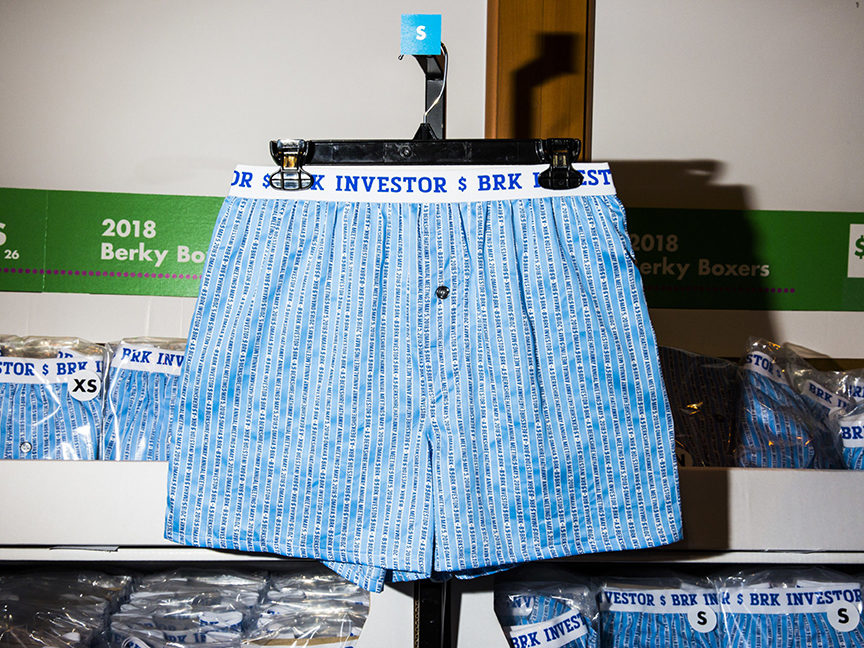
Home » Fruit of the Loom Gets Up to Date on Financial Tech
CASE STUDY
Fruit of the Loom Gets Up to Date on Financial Tech

August 1, 2022
With business growth comes the need to update key information systems — especially those for managing financial processes.
It’s a state of affairs that every company strives for, but it can cause severe operational headaches in the transition. Fruit of the Loom, the big American manufacturer of activewear and underwear that is part of the Berkshire Hathaway Inc. empire, was on a steep growth curve due to a combination of acquisitions and sales increases. The company’s financial management system wasn’t keeping pace.
The old multi-tier financial tool kept running into data problems, requiring the rewriting of multiple systems. “Every time we’d try to do an update, it was a full-on project needing consulting with weeks of upgrade,” recalls John Alsobrook, Fruit of the Loom’s manager of financial systems. “We had a very sizeable project cost.”
From a systems perspective, the company came to a crucial decision point: Should it invest in the next version of its existing application, or see what else was available in the software market? In the end, it chose the latter course, tired of struggling with a complex and disjointed system, spanning up to a dozen environments, and burdened by servers that weren’t talking to each other. “We’re not infrastructure experts — we’re financial experts,” says Alsobroook.
After reaching out to a number of solution providers, Fruit of the Loom settled on OneStream Software LLC, maker of a platform for automating financial processes for planning, budgeting and close consolidation. Fruit of the Loom was already familiar with OneStream founders Bob Powers and Tom Shea, who had previously invented Hyperion Financial Management, which was later acquired by Oracle Corp. They launched OneStream as a replacement for Hyperion, according to OneStream account manager Lee Ramey.
Hands-On Support
Fruit of the Loom was attracted to OneStream in part because of the latter’s high level of customer support. “It was knowing who we were working with, instead of our former experience of being with a faceless corporation,” says Alsobrook. As for the product itself, Fruit of the Loom was drawn to its all-inclusive design. Key financial processes such as budget forecasting, actuals and account reconciliation existed within a single platform, eliminating the need to port data between modules, and sharply reducing maintenance cost.
Ramey says implementation of the OneStream system at Fruit of the Loom was “typical yet complicated,” involving the migration of multiple environments into one solution. Alsobrook cites the challenge of swapping out a major financial validation system while the business is running at full steam. “Things are moving,” he says. “You’re shooting at a moving target.”
With every new technology adoption comes the need to manage the human element. “People are creatures of habit,” says Ramey. “You’ve got to make sure there’s a clear understanding and executive sponsorship. Why the change in solution? And what are the desired benefits for all team members?”
Rather than undertake a full deployment of the tool at the outset, Fruit of the Loom elected to approach the project in phases. It began with planning and budgeting, with the aim of eliminating those multiple environments. Once the proper structure and content for planning was in place, it moved on to close consolidation.
Getting Up and Running
The new tool was tested and ready to go within four months, Alsobrook says, although Fruit of the Loom ran parallel systems for another four months to assuage the anxieties of a conservative user base. “Adoption went very well,” he says. “We were able to give them a lot more functionality in the way we loaded data into OneStream.”
The scope of the company’s financial operations is vast. The initial consolidation and reporting application included some 1,200 accounts, 137 legal entities, 353 locations, 243 departments and 195 brand codes. In all, the system was processing more than 2.9 billion data points, 100 times the number that the company had collected and analyzed with the former application.
Ramey cites three main benefits to Fruit of the Loom by adopting the OneStream application: reduced technical debt, greater efficiencies and improved overall effectiveness of financial processes. The company no longer needed multi-level point solutions to satisfy various use cases, or heavy involvement by I.T. in making the system work. Users gained access to correct data and could make decisions more quickly without undertaking “heroic efforts” to consolidate. And with access to more accurate analytics for selling, general and administrative (SG&A) expense, financial managers could spend time on high-level responsibilities instead of worrying about “the mundane movement of data from multiple environments in a legacy solution.”
Alsobrook says Fruit of the Loom is looking at implementing additional functionality of the OneStream system. “They seem to be ahead of the curve on what financial areas we’re looking for. OneStream is constantly looking to add value to what we have.”
Adds Ramey: “Great brands matter to us, and Fruit of the Loom is certainly that. They’ve been a part of the OneStream family.”
Read more: 100 Great Supply Chain Partners of 2022: Weathering the Storm Together
RELATED CONTENT
RELATED VIDEOS
Subscribe to our Daily Newsletter!
Timely, incisive articles delivered directly to your inbox.
Popular Stories

2023 Supply Chain Management Resource Guide: Packing for a Difficult Year
VIEW THE LATEST ISSUECase Studies
-
JLL Finds Perfect Warehouse Location, Leading to $15M Grant for Startup
-
Robots Speed Fulfillment to Help Apparel Company Scale for Growth
-
New Revenue for Cloud-Based TMS that Embeds Orderful’s Modern EDI Platform
-
Convenience Store Client Maximizes Profit and Improves Customer Service
-
A Digitally Native Footwear Brand Finds Rapid Fulfillment



